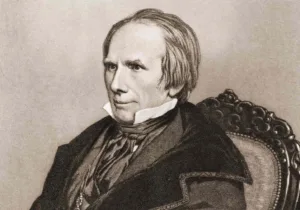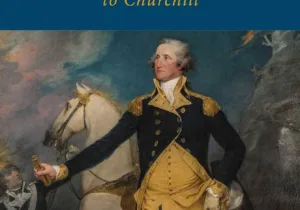Published in 1989, Donald Hickey’s seminal study of the War of 1812 was aptly titled The Forgotten Conflict. Coming close on the heels of the American Revolution and falling well short of the Civil War in battlefield heroics and, consequently, popular interest, the second Anglo-American conflict generated little interest even among military historians for most of the twentieth century. Recently, however, the War of 1812 enjoyed a moment in the spotlight. From 2012-2015, scholarship on the conflict surged, thanks to the celebration of its 200th anniversary. The last decade has seen an outpouring of publications, and anyone interested in understanding one of America’s least-celebrated wars now has no shortage of books to choose from. As public attention shifts to the anniversaries of the two World Wars, the War of 1812 is becoming forgotten again, and now seems an ideal time to survey the landscape of new books written in the (roughly) decade surrounding its sesquicentennial.
For a general survey of the conflict, the best place to start is still with Hickey, who published an updated edition of The Forgotten Conflict in 2012. Other fine surveys include Troy Bickham’s outstanding The Weight of Vengeance, Robert P. Watson’s America’s First Crisis, and Jeremy Black’s global history The War of 1812 in the Age of Napoleon. Jon Latimer’s 1812: War with America admirably presents the conflict from the British perspective.
Most of the fighting on land took place along the U.S.-Canadian border, as America launched an ill-fated attempt to wrest its northern neighbor from the British and use it as a bargaining chip in the peace negotiations. Alan Taylor makes a convincing case that the fighting here can best be understood as a civil war, one that divided families, neighbors, and Native American tribes. The Civil War of 1812 captures the major battles in the United States’ northern borderlands, but it also goes beyond the generals and political leaders to look at the war through the eyes of the everyday farmers and traders, warriors and militiamen who did the actual fighting. While scholars tend to tilt heavily towards the American perspective, readers will also find Defender of Canada and The Astonishing General very useful. These studies recount the careers of Sir George Prevost and Isaac Brock, respectively, the two men who blunted the American advance into Canada.
In the early days of the war, as the United States’ much-anticipated assault on Canada imploded, it was events at sea that salvaged American morale, all the while infuriating the British, who had grown quite used to their navy’s aura of invincibility. Of course, the tiny American navy was only challenging a fraction of British naval might in the first year, while Napoleonic France remained their primary adversary. Reinforcements allowed Britain to effectively bottle up the U.S. Navy by late 1813 and impose a strangling blockade on American commerce. Nevertheless, the war at sea remains a favorite topic of American writers, and in recent years some of the finest works available on the subject have been written. George C. Daughan’s 1812: The Navy’s War is much more than just a naval history; his discussion of Madison’s wartime leadership and America’s evolving strategy is among the best available. Utmost Gallantry by Kevin McCranie of the Naval War College, and popular historian Stephen Budiansky’s beautifully-written Perilous Fight each look at the war at sea from both American and British perspectives.
Naval officers from both nations regarded service on the Great Lakes region as significantly less glamorous than fighting at sea, and their biases are reflected in the literature. This is unfortunate, for two of the most crucial battles of the war were fought in the Great Lakes. John Schroeder’s The Battle of Lake Champlain makes a compelling case why Thomas Macdonough’s victory was the most decisive of the entire war. Although it falls outside the timeframe for this post, no work can match Gerard Atloff and David Curtis Skaggs’ A Signal Victory for the pivotal Battle of Lake Erie
By the summer of 1814, Britain effectively controlled America’s coastline, and could send raiding parties ashore with impunity. Most famously, A British army under General Robert Ross marched triumphantly into Washington and burned the capital to the ground. A follow up assault on Baltimore failed, giving birth to the United States’ national anthem. Charles Neimeyer chronicles this theater in War in the Chesapeake, while readers can also get a thorough account of the events leading up to the burning of Washington in The Man Who Captured Washington. Fort McHenry’s stand against British bombardment to preserve Baltimore is one of the seminal events in American history, which longtime Washington Post reporter Steve Vogel eloquently narrates in Through the Perilous Fight.
Those interested in the impact of the War of 1812 on the American home front will also find a good deal of new material published. War and the Passions of Patriotism examines American popular culture during the war, and how the rhetoric in defense of the war effort shaped American society going forward. Alan Taylor’s second War of 1812 book, The Internal Enemy, examines how the war impacted slavery in the early republic. While British sailors fled to the U.S. hoping to find better treatment in the American navy and prospects of a better post-war life than begging in London’s crowded streets, slaves in the South saw the British Navy as a vehicle of liberty and eagerly flocked to it. Britain’s use of runaway slaves in her military also raised the specter of a slave insurrection, already one of the South’s greatest fears.
The War of 1812 will never compete with World War II or the Civil War for Americans’ attention, yet in many ways it was far more typical than either. The decisive victories of those two wars tend to give a misleading idea to Americans that all wars can be “won” in conclusive fashion. The War of 1812 argues otherwise. While Lambert might insist that it was a clear-cut British victory, the truth is that the conflict ended in a brokered peace that neither side was entirely satisfied with. The unpredictable nature of war, the difficulty marshalling national resources and maintaining popular support, the hazards of juggling multiple conflicts at once, and the almost impossible to foresee social consequences of war are all on display in this forgotten conflict. It deserves wider recognition among Americans, and with a wealth of outstanding recent studies, one hopes it will avoid fading into obscurity.
—
Thomas Sheppard holds a PhD in military history from the University of North Carolina. He currently lives in Washington, DC, and writes on U.S. politics and foreign policy. The views expressed here are solely his own.
Photo Credit: Re-enactors in British uniforms fire muskets toward the “American” re-enactors in this annual commemoration of the Battle of Stoney Creek on June 5, 2016. By Peter K Burian, via Wikimedia Commons.






